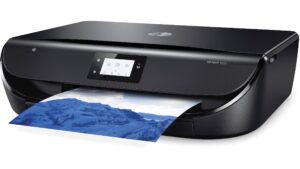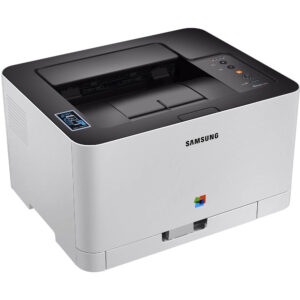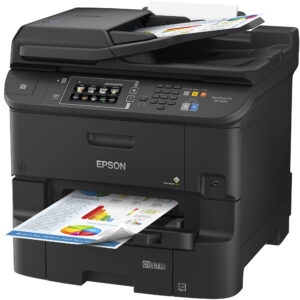Back to: Computer Science Primary 2
Welcome to class!
In today’s class, we’re going to embark on a journey to explore the fascinating world of printers and discover the wide array of printer types that exist. Just like a toolbox filled with various tools, printers come in different types, each suited for specific tasks and purposes. Let’s take a comprehensive look at the many types of printers available to us.
Types of Printers

Printers are not one-size-fits-all devices; they come in diverse types, each designed to meet unique printing needs. Here’s an in-depth exploration of the various types of printers:
1. Inkjet Printers:

Inkjet printers create images or text by spraying tiny droplets of liquid ink onto paper. They are known for producing high-quality color prints and are suitable for home and office use.
Inkjet printers are perfect for tasks like photo printing, color documents, and general-purpose printing.
2. Laser Printers:

Laser printers use a laser beam to create static electricity patterns on a drum, which then attracts toner (powdered ink) to produce text and images. They are known for speed and high-volume printing.
Laser printers are ideal for office settings, producing crisp text, and large print volumes.
3. All-in-One Printers (Multifunction Printers):

All-in-one printers combine multiple functions in a single device. They often include printing, scanning, copying, and sometimes faxing capabilities.
These versatile printers are suitable for homes and small offices where space and budget considerations make them a practical choice.
4. Photo Printers:
Photo printers are designed specifically for producing high-quality photographs. They often use inkjet technology and offer features for borderless prints and color accuracy.
Photo enthusiasts and professional photographers use photo printers to create beautiful prints of their work.
5. 3D Printers:
3D printers build three-dimensional objects by adding material layer by layer. They are used in various industries, including manufacturing, healthcare, and even hobbyist projects.
3D printers are used to create prototypes, custom parts, medical implants, and artistic sculptures.
6. Dot Matrix Printers:
Dot matrix printers use an impact mechanism to strike an ink-soaked ribbon against paper, creating printed characters with dots. They are known for their durability but are less common today.
Dot matrix printers were once popular for tasks like printing invoices, labels, and multipart forms.
7. Dye-Sublimation Printers:
Dye-sublimation printers transfer solid dye onto paper or other materials using heat. They are often used for high-quality photo printing.
Dye-sublimation printers are popular for producing photographs, especially in professional photography studios.
8. Thermal Printers:
Thermal printers use heat to transfer ink or create an image on specially coated paper. They come in two main types: direct thermal and thermal transfer.
Thermal printers are used for tasks such as printing receipts, labels, and barcode tags.
9. Large-Format Printers (Wide-Format Printers):
Large-format printers are designed to print on oversized paper or other materials, making them suitable for creating posters, banners, and architectural drawings.
Industries like advertising, architecture, and engineering often rely on large-format printers for their large-scale printing needs.
10. Label Printers:
Label printers are specialized for creating adhesive labels. They are commonly used for organizing, shipping, and retail purposes.
Label printers are employed in retail for creating product labels, in offices for organizing files, and in shipping for generating address labels.
Just as artists choose different brushes for various painting techniques, different types of printers are like specialized tools for different printing tasks. They empower us to bring our ideas and creations into the physical world.
In conclusion, printers are versatile devices that come in a rich tapestry of types, each tailored to specific printing needs. The choice of printer type depends on the type of printing tasks you need to perform, whether it’s producing vivid photographs, high-speed office documents, or intricate 3D models. The next time you encounter a printer, remember the vast world of printing possibilities it represents!
Question Time:
How do inkjet printers work, and what sets them apart from other types of printers?
What are the common uses of inkjet printers, and why are they often preferred for these tasks?
We have come to the end of today’s class. I hope you enjoyed the class!
In the next class, we shall be discussing Functions of a Printer.
In case you require further assistance or have any questions, feel free to ask in the comment section below, and trust us to respond as soon as possible. Cheers!
